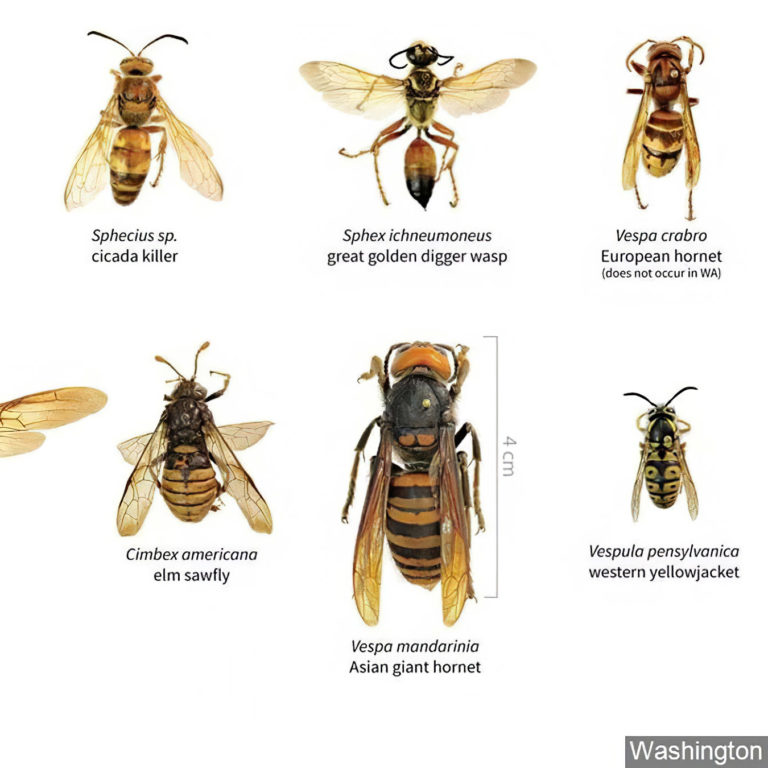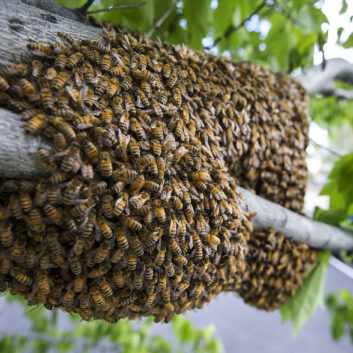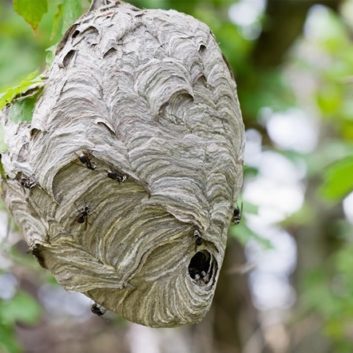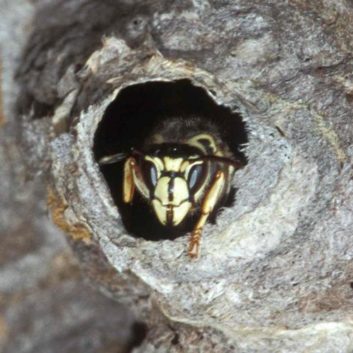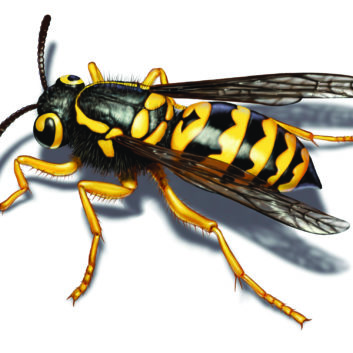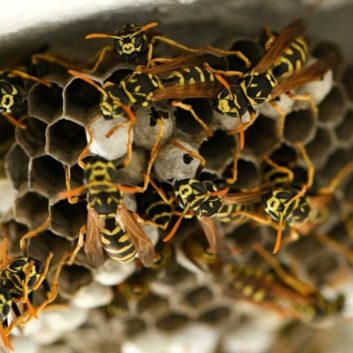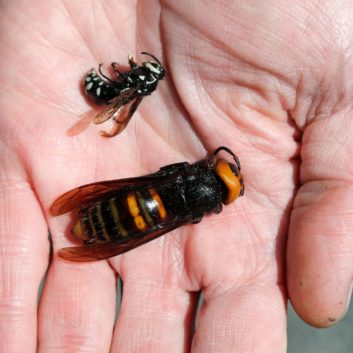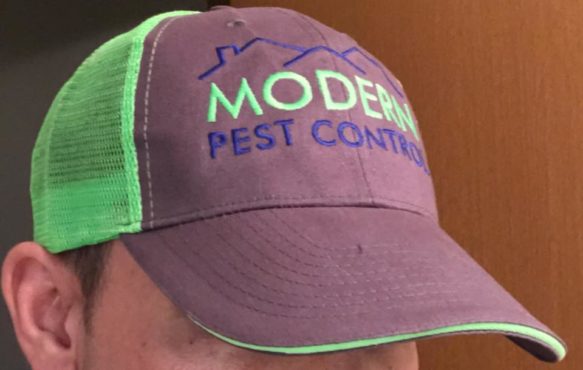Bees
For the most part, bees are not aggressive and only sting in self defense. Most species of bees collect pollen to make honey and are beneficial to man. For the most part they are docile and can easily be managed with the right knowledge. Apart from the occasional story we hear about Africanized Honey Bee attacks, most honey bees here in Washington State are handled by beekeepers when there is a call in for them. Bees eat pollen and nectar, making them important pollinators. In fact, the stingerless males do much of the foraging. With the exception of honey bees and bumblebees, most bees are solitary and live in underground nests or artificial bee huts created by man. Swarm season generally occurs between spring and early summer. The swarm may move anywhere from 1/4 to 1 mile each move. If given a choice, bees will relocate an average of about half a mile from the parent colony. They prefer a sight off the ground 8-15 feet, in cavities such as eaves, attics, sheds, and tree knots. Swarms generally are harmless and should be left alone. Contact your local beekeepers association for swarms.




